Joint Mobilization part 1
1/14
There's no tags or description
Looks like no tags are added yet.
Name | Mastery | Learn | Test | Matching | Spaced |
|---|
No study sessions yet.
15 Terms
Joint Mobilization: What is it?
slow, passive joint movement
decreased p! and increase joint motion
preferable when jt capsule is tight
use w/ ROM exercises to improve flexibity
When would you use joint mobs?
pain
muscle guarding/muscle spasm
joint effusion
joint contractures
joint capsule adhesions
ligamentous contractures
malalignment of bony joint surface
Osteokinematics
Physiological joint movement of the bone
Arthrokinematics
Joint surface movement
guarantees normal + smooth jt movement
occurs w/ osteokinematics
distraction, compression, sliding, rolling, spinning
Swing
visible movement of long bone; movement of bony levers
measurable w/ goniometer
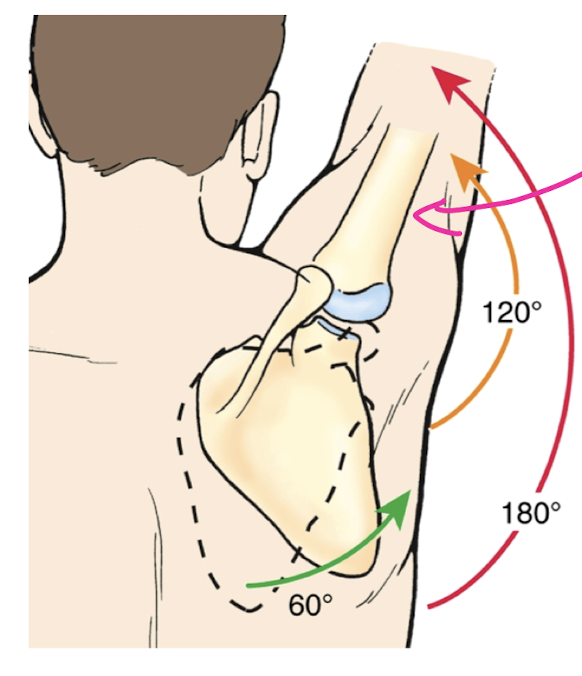
Distraction
Separation of jt surfaces
allows max jt separation and decreased pain
most common jt mob technique→ especially after surgery to decrease p!
do this parallel or perpendicular to long bone
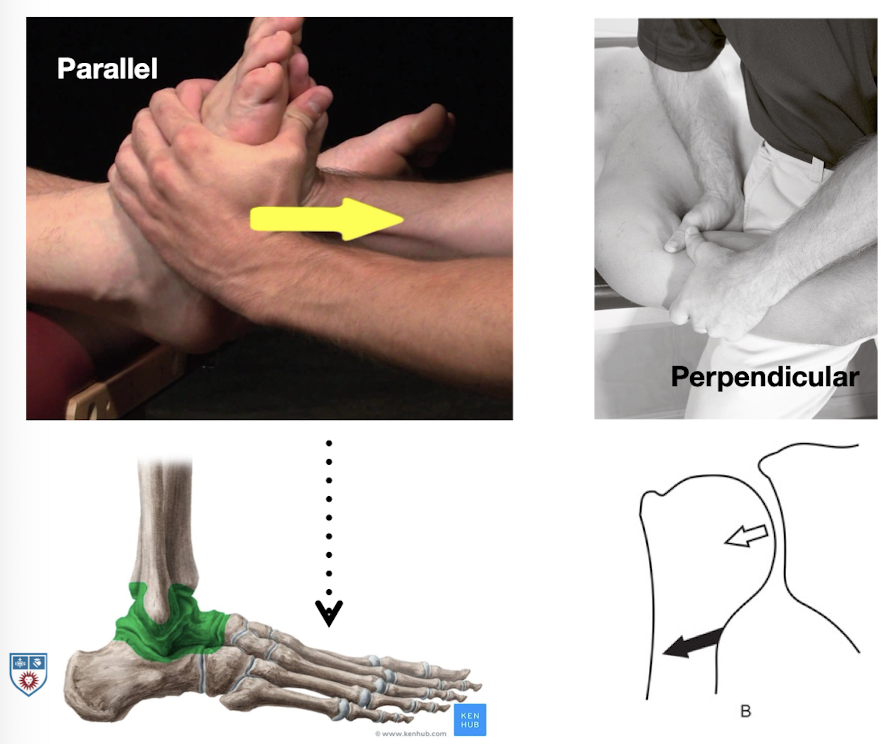
Compression
Decrease of joint space btw surfaces
opposite of distraction
increase joint stability
crucial for cartilage health, BUT excessive compression can increase articular cartilage injury (i.e. meniscus tear)
proper compression promotes tissue health and synovial fluid

Rolling
convex and concave surfaces
always rolling same direction of the swing
always with sliding (glide) and spinning in normal joints
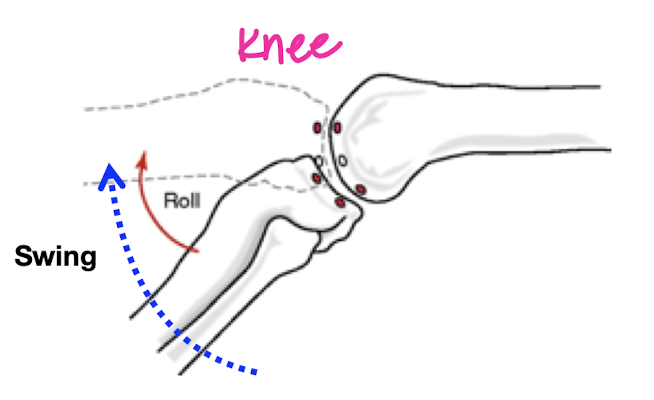
Sliding
Convex moving surface- opposite to swing
Concave moving surface- same to swing
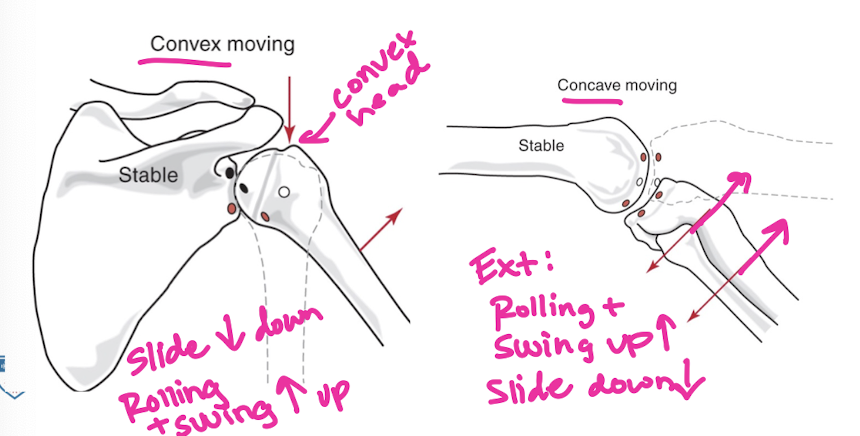
Spinning
rotation around a stationary axis
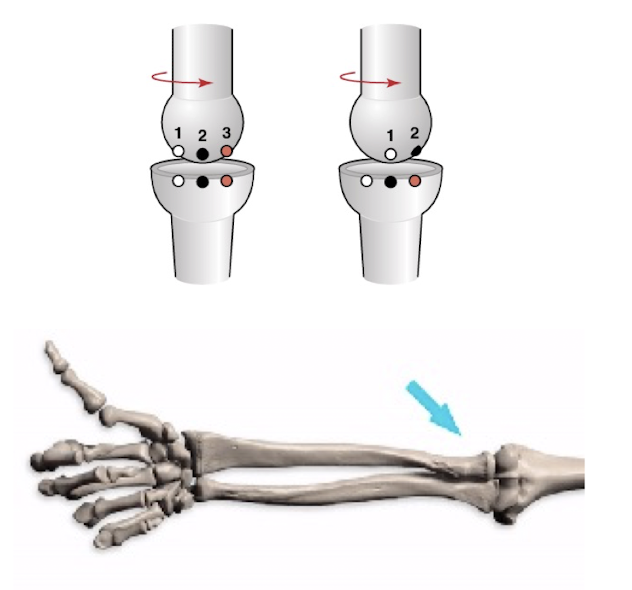
Concave-Convex Rule
Concave moving on Convex= same direction of slide and swing
ex: femur convex, tibia concave→ both moving superior
Convex moving on Concave= opposite direction of slide and swing
ex: humeral head convex, glenoid concave→ arm swings superior but slides inferior
Loose packed position
relaxed joint position
chose this most often for joint mobs
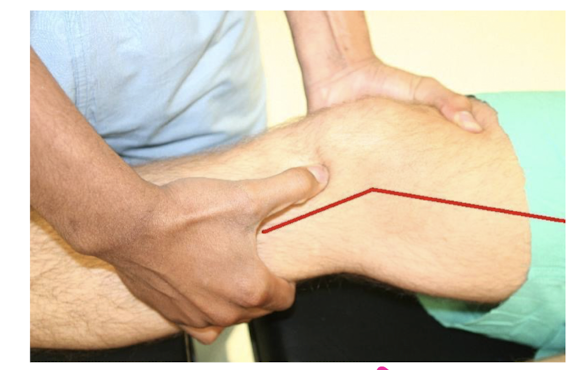
Close Packed Position
Locked Joint Position
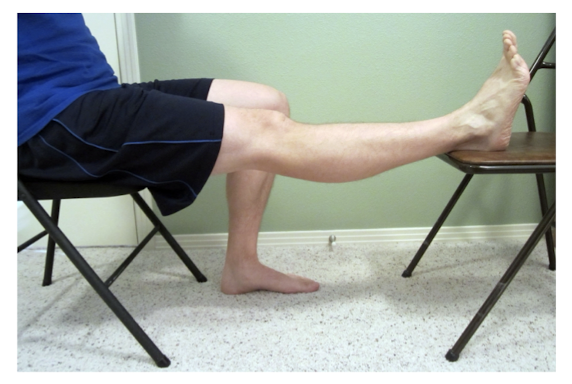
Capsular Patterns
predictable pattern of motion loss observed when jt ROM limitations occur secondary to jt capsule tightness
jt mobs are necessary to normalize jt capsule mobility for complete ROM
Capsular Pattern: Talocrural jt
PF more limited than DF